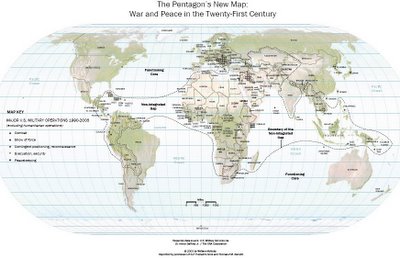 Danish Prime Minister Anders Fogh Rasmussen gave a speech today at the Foreign Ministry's advisory Council on International Development Work - the first time he met with the Council's members which consist in Danish stakeholder development ngos. Official Danish development aid puts Denmark at the forefront of state driven development aid in relative terms. When including all development related activities, Denmark in 2004 ranked number 2 globally among the most generous countries, just a tad behind Holland according to Foreign Policy.
Danish Prime Minister Anders Fogh Rasmussen gave a speech today at the Foreign Ministry's advisory Council on International Development Work - the first time he met with the Council's members which consist in Danish stakeholder development ngos. Official Danish development aid puts Denmark at the forefront of state driven development aid in relative terms. When including all development related activities, Denmark in 2004 ranked number 2 globally among the most generous countries, just a tad behind Holland according to Foreign Policy.The Danish government has been widely critized in the development business for fixing the official Danish development budget in absolute 2001 terms, thus lowering the GDP ratio from 1% to 0,8% since 2001. This year, due to corrections for inflation the budget looks set to grow again for the first time. The PM's speech centered on globalization as a means to development in Africa:
Globalization is often described as something dangerous. But I see globalization as an exiting challenge that offers opportunities for growth and jobs. This also goes for the development countries. The road forward from an African perspective is not simple, but demands a special effort. (...) The next decade's largest challenge is to make Africa part of globalization.The connection between development and globalization is of course at the core of Thomas P. M. Barnett's grand strategy analysis of The Pentagon's New Map and Blueprint for Action. Barnett's website today offered the map to be downloaded for free.
 The map offers an important graphic analysis by showing the total man-days spent by US military from 1990 to 2003 around the globe, thus pinpointing the area of intervention of the future. This is the "Gap", which is defined by not being "connected" to the Rest of the World, i.e. the "Core", where globalization is proceeding, and where security issues are rarely a matter of life and death. Thus security and development go geographically and functionally hand in hand in (defining) the Gap.
The map offers an important graphic analysis by showing the total man-days spent by US military from 1990 to 2003 around the globe, thus pinpointing the area of intervention of the future. This is the "Gap", which is defined by not being "connected" to the Rest of the World, i.e. the "Core", where globalization is proceeding, and where security issues are rarely a matter of life and death. Thus security and development go geographically and functionally hand in hand in (defining) the Gap.Interesting to see, that the Danish PM's perspective is so closely aligned to Barnett's basic policy prescription: shrink the Gap.
No comments:
Post a Comment